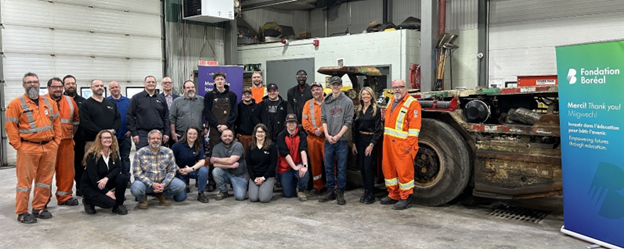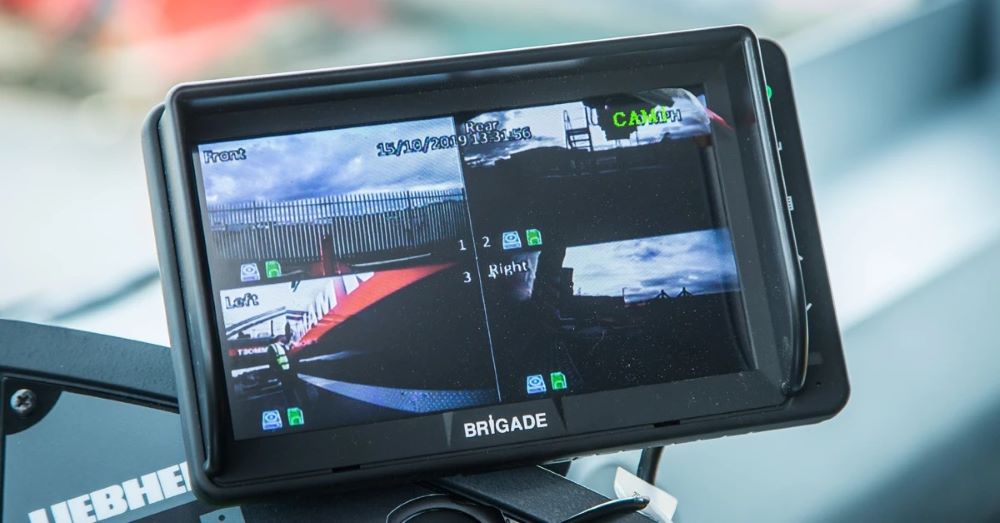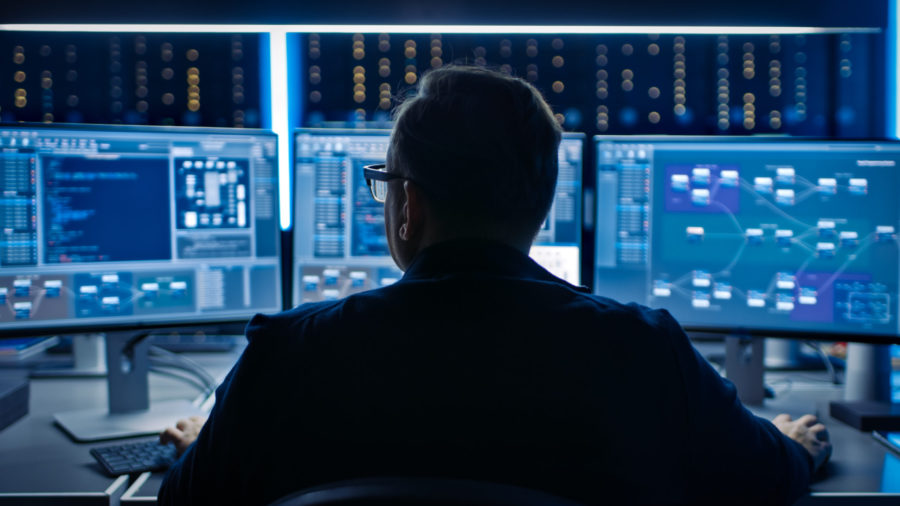The challenges and triumphs of digitization

The panel on digital mining at PDAC, hosted by Maestro Digital Mine and moderated by Bob McDonald, host of CBC Radio’s Quirks and Quarks. COURTESY: MAESTRO DIGITAL MINE
The ongoing digitalization of mining is presenting both exciting results and plenty of challenges. A panel of experts at this year’s Prospectors and Developers Association of Canada convention in Toronto in March dished on both aspects to an audience of more than 120 gathered at the Northern Ontario Mining Showcase.
Moderated by Bob McDonald, host of CBC Radio’s Quirks and Quarks, and organized by Maestro Digital Mine, the panel discussed what the digital age is already enabling miners to do, how they see it progressing in future, and also shared their difficulties with the process. But first, they outlined why digitalization is so important to the mining industry.
“Data is the goal … we have to have as much as we can, as real-time as we can to make real-time, fast decisions,” said Ethan Hull, formerly Barrick Gold’s manager of IT for North America and now CEO of TECHrep Global.
“With data you are able to measure performance, and if we’re able to measure performance we are able to improve performance,” said Michel Samovojski, Goldcorp’s technology co-ordinator for the Canadian northeast region.
Now that mines are becoming increasingly connected with more robust communications systems that can transmit data and equipment that is constantly producing data, digitalization is yielding concrete, and sometimes unexpected results.
At Dundee Precious Metals’ Chelopech mine, in Bulgaria, the company has started to use a drone for mapping underground, thanks to its Wi-Fi communications system (See page 24 for details).
“Any mining engineer that works in Canada has never seen the inside of a stope because it’s so unsafe to go inside,”
said Dundee’s vice-president of digital innovation, Theophile Yameogo. “The first time we sent a drone with a camera I was actually excited because that would be the first time I would see the inside of a stope – for us, surveyors not having to move closer to it is a big safety win.”
Dundee is also using machine learning technology to increase worker safety; it recently analyzed 10 years’ worth of health and safety data using a machine learning algorithm.
“It came back with insights we haven’t seen before. Now we know what time of day incidents are most likely to happen, for example, (which can help us) prevent them.”
The use of automated machinery is also having an impact on productivity. At the Borden mine in northern Ontario, using Maestro’s Plexus technology has enabled Goldcorp to use Sandvik’s AutoMine solution to continue working between shifts, giving the company two additional hours of mucking time per day, said Samovojski. And at one mine where Barrick implemented a short interval control program with the help of tablets that workers used as a new tool that provided better visibility into the tasks at hand, Hull said the crew increased man hours by 30 minutes a day, which translated to 400 extra tonnes per day and $40 million per year.
“Honestly they were getting that extra load because they were staging better, they weren’t waiting in a queue, they knew where they needed to go, they could see the mine map, they could see where the need was and they would automatically go where the work needed to be done. They’re professional miners, they want to work, they don’t want to wait in line, just like we don’t want to wait in traffic.”
Difficulties with digitalization
In addition to the benefits they’ve seen from digital technology, the panellists also discussed some of the challenges of incorporating it into their operations.
“One of the biggest mistakes we made at Barrick was not understanding a) the technology stack and how it integrates with existing technology – so if we’re bringing something new, how does it interface technically – in the code all the way through the servers,” Hull said.
“And also, the people – are they ready to receive it? Do they even want it?”
The company had to engage with workers to make sure they understood how to use the technology and also that the technology worked for them. It also went back to the vendor to make the technology more intuitive.
Chris Burgess, director of innovation and transformation at Yamana Gold, noted the importance of change management.
“Technology is the sexy part but it’s easy, it’s proven technology. Are people going to use it?”
Yameogo noted that technology should be intuitive – training shouldn’t be necessary, just like it’s not necessary to be able to use Amazon or a smart phone.
“When it comes to technology, it has to be fairly natural to use,” he said. “Our approach is to be really challenging on the providers so that (the technology they provide) is seamless.”
Data silos are another big challenge in mining. Digitalization means “data democracy,” said Yameogo, noting that the term means visibility rather than chaos, and that transferring information to the Cloud naturally creates data democracy.
“By moving to the Cloud and having this repository of data, now suddenly I, or somebody somewhere else, can run a machine learning algorithm on the data without having to go through sending a requisition.”
Burgess said that because of greater data transparency, Yamana is getting better insights about its operations and therefore able to make more strategic and timely decisions. However, people are also asking more questions now that they have more information, he noted.
“I’ve definitely noticed a different level of conversation – much deeper conversations.”
Data ownership and security
Hull noted that data use and ownership can be contentious. A common attitude is: “‘Why do you want it and what are you going to do with it – you’re going to automate it and make me obsolete,’” he said.
“Data democracy’s a great term… the main goal is to try to get that information directly from the machine and that’s good because now we don’t have any manipulation, we get clean crisp data from the machine as much as possible.
But you’ve got to understand in a lot of organizations that’s a difficult challenge.” One audience member remarked that a lot of data at mines is manipulated to some degree by the person who records it because of incentives, bonuses and other factors. Hull shared a similar experience from Barrick’s short interval control program.
“One of the first days we went underground to evaluate the technology and go through the numbers, we were going through the numbers with a general manager at an unnamed site and he said ‘I don’t like that number, change that number.’” The GM had a reporting meeting the next day and didn’t want to get chewed out and he knew he would make up the difference later, Hull said.
“I think that it starts with the top, your top GM, your superintendent… people need to be able to fail to a certain extent… let’s make (the data) accurate and understand the game plan. If you have more data then you can mitigate that faster, and if you have the real data from the machine, there’s no way that it can be misinterpreted.”
As data becomes more pervasive, security is becoming crucial, some of the panellists noted.
Hull noted a case several years ago where a hacker was able to remotely operate some ventilation fans at a mine.
“What kept me up as an IT manager was that very thing – (the possibility of) somebody messing with the ventilation underground – that’s people’s lives.”
It may not be possible to prevent all security breaches, so companies need to make sure they have good cybersecurity practices and are able to react to breaches quickly, he added.
“How are you resilient to those security breaches – that’s often more important than preventing them,” Hull said.
“It’s really important to have segmentation between informational technology and operational technology so you will isolate both,” added Goldcorp’s Samovojski.
“The informational technology area is easier to get to from the internet, but when you go deeper on the OT side of the business, it’s a lot more complex and you need to get more authorizations… it’s a lot harder to get there.”





Comments